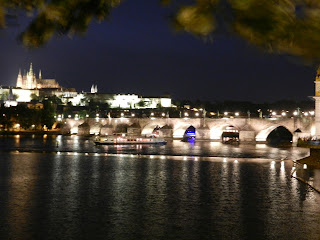 We’re just
wrapping up the biking portion of our trip and I can’t recommend it
enough. Our six days of riding kicked
off in the Czech Republic, meandered through Germany along the Danube and wrapped up in the Austrian countryside.
Since the terrain for the most part is fairly flat, rides have been
pleasant. Most have been within constant
view of a river and castle of some kind.
People who are attracted to a trip like this are easygoing, active and
low maintenance- all good things in travel partners.
We’re just
wrapping up the biking portion of our trip and I can’t recommend it
enough. Our six days of riding kicked
off in the Czech Republic, meandered through Germany along the Danube and wrapped up in the Austrian countryside.
Since the terrain for the most part is fairly flat, rides have been
pleasant. Most have been within constant
view of a river and castle of some kind.
People who are attracted to a trip like this are easygoing, active and
low maintenance- all good things in travel partners.
A few things have
been constant throughout our adventure:
· Bavaria is clean.
We saw a total of two pieces of trash along our 100 miles of riding. I’m not sure if they just choose to be green
and not litter or are meticulous in cleaning. I’d bet on the former based on the solar panels we saw on most homes and
farms.
·
They sure do know
how to grow some flowers. Window boxes
in the quaint villages we visited were overflowing with colorful vines and
flowers. We’ve stayed in a series of family-run inns- each one more charming
than the next!
·
They sure like
castles and cathedrals. No matter how
small the town, they’ll surely have a town square or two dominating the village. The small village of Passau, Germany has the
second largest organ in the world. In
the Czech village of Cesky Krumlov, the grand Rosemberg chateau was a huge
presence guarding over the city. The
Benedictine Abbey in lovely Melk, Austria held more gold than Fort Knox!
·
They can brew
some beer! From Czech to Austria, most meals included a local brew or two-
often in a tiny Bavarian tavern.They also make a mean wine here in Austria
with vineyards lining our bike paths.




